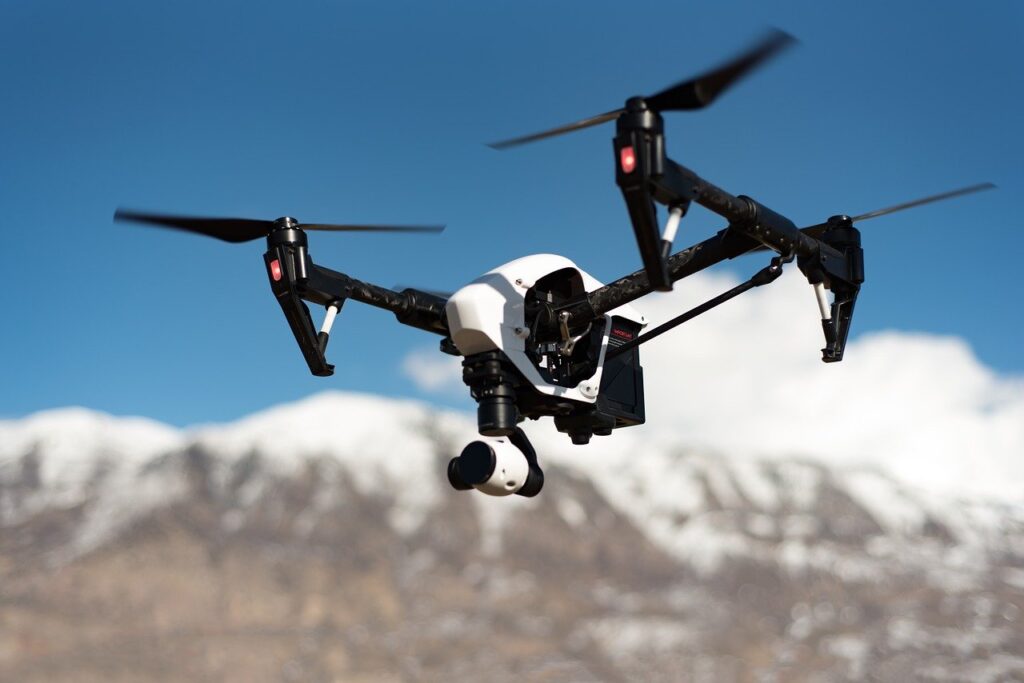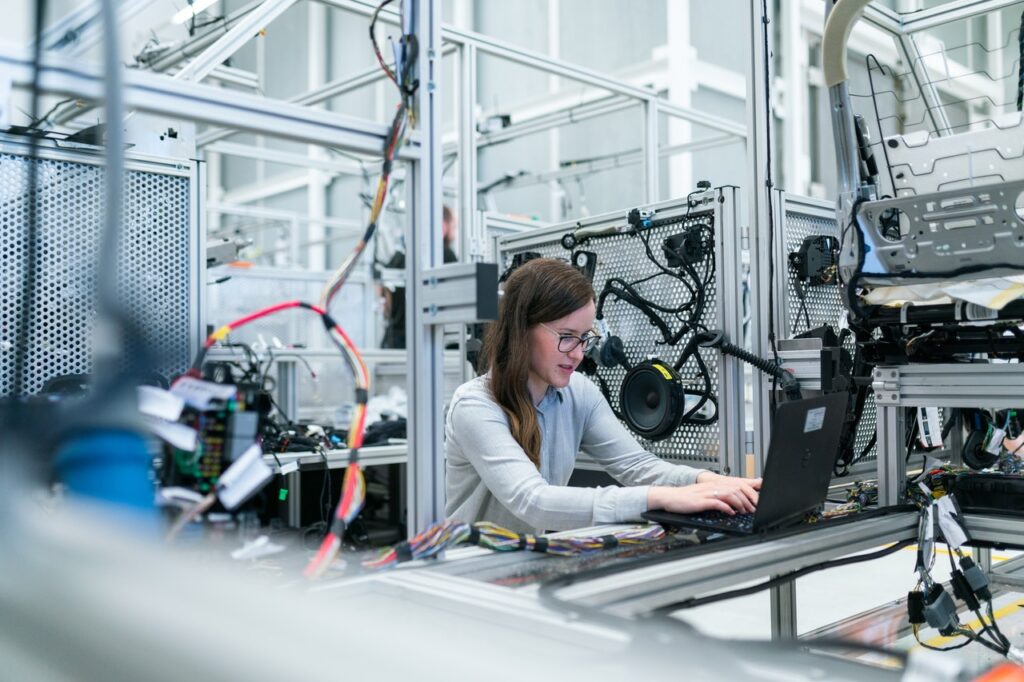What is Mechatronics Engineering
Mechatronics, which is also called mechatronics engineering, is a multidisciplinary branch of engineering that focuses on the engineering of both electrical and mechanical systems, and also includes a combination of robotics, electronics, computer, telecommunications, systems, control, and product engineering.
Mechatronics specialists can do quite a bit across multiple engineering disciplines and have a solid base from which to grow. Mechatronics specialists know both mechanical and electrical engineering fundamentals, they speak both languages, so a mechatronics specialist can work with both mechanical and engineering teams.

A mechatronics engineer unites the principles of mechanics, electronics, and computing to generate a simpler, more economical and reliable system. The term “mechatronics” was coined by Tetsuro Mori, the senior engineer of the Japanese company Yaskawa in 1969. An industrial robot is a prime example of a mechatronics system; it includes aspects of electronics, mechanics, and computing to do its day-to-day jobs.
Depending on the specific profession, careers in mechatronics require postsecondary education at varying levels. Technicians typically need only an associate’s degree in mechatronics, while engineers need at least a bachelor’s degree to enter the field and may need a graduate degree to gain advancement.
History of Mechatronics Engineering
Tetsura Mori was working for a Japanese company called Yaskawa Electric Corporation that was famous for building mechanical factory equipment.
At that time, Yaskawa Electric Corporation was using some electronic features for manufacturing mechanical equipment. Mori wanted to introduce a technical term for that new technology, so he combined the two technical words ‘mechanical’ and ‘electronics’ and created the new word “Mechatronics.”
In 1970, Yaskawa applied to make this word a registered brand and got the rights in 1973. But, at that time this term didn’t gain much popularity. After the 1980s, the term started gaining popularity because of its useful features.
Earlier, this term was based on only some electrical and electronic computers, but after the 1980s, the use of computer technology was integrated. The controlling and functioning of machines became much easier by use computer hardware and software. This allowed the start of manufacturing of a variety of products of any size with very high accuracy and comparatively low cost.

At the research and development level, mechatronics is classified into ten technical areas: Motion Control, Robotics, Automotive Systems, Intelligent Control, Actuators and Sensors, Modeling and Design, System Integration, Manufacturing, Micro Devices and Optoelectronics, and Vibration and Noise control.
Obviously, the design of future products will involve a combination of precision mechanical and electronic systems, and mechatronics will be the basis for all activities in products and production technology.
Mechatronics Engineering Education
An associate’s degree in mechatronics can be earned through a community college or technical school. This 2-year degree program prepares students for entry-level positions and focuses on troubleshooting and maintenance processes. Courses may include machine circuitry, robotic design, engineering drawing and industrial controls. While many technical schools offer 2-year degrees similar to those of community colleges, their programs usually focus primarily on practical application and offer less general education and theory instruction.
A bachelor’s degree program in mechatronic engineering generally takes four years to complete. Students spend their first two years studying math, science, introductory engineering and other general education requirements. The next two years focus on theoretical and scientific approaches. Core courses may include robotics analysis, fluid dynamics, automated system programming, linear circuits, mechanical dynamics and design laboratory. Students may be required to complete a mechatronic engineering design project to graduate from this program.

A master’s degree in mechatronic engineering offers students an opportunity to work in management and research positions. This advanced degree program combines classroom instruction with practical training in the field. Classes usually focus on research and methodology in mechatronics and may include courses in artificial intelligence systems, finite element analysis and automation theory.
Mechatronics Engineering Careers
Jobs
Employment of mechatronics technicians is projected to show little or no change from 2018 to 2028, according to the BLS.
In high demand, mechatronics engineers are uniquely equipped to work as mechanical engineers with electronics, instrumentation and real time software engineering skills. With a core mechanical engineering education and a strong background in integrating electronics, sensors and actuators into devices, mechatronics engineers are a valuable asset in a wide field of engineering.
Mechatronics specialists work with massive industrial robots, smaller robots in pick-and-place operations, control systems for bottling or packaging of food and drink products, drones, designing control systems for rides in amusement parks, prototype development.
Some mechatronics specialists are employed in firms where it is necessary to design and maintain automatic equipment. This includes industries such as manufacturing, mining, aviation, robotics, defense, and transport. Other mechatronic specialists are employed by large manufacturing companies involved in high-volume production. Many new career opportunities are on the horizon due to technological advances.
They may work in laboratories, high tech companies, large global enterprises, processing plants or engineering offices but can also be involved with research in emerging fields like bio-engineering, nanotechnology and robotics. Mechatronics engineers may be required to travel to present at a conference or view a new design idea or innovative technology.

Salaries
Obtaining a degree in mechatronics engineering will open a multitude of doors for you where your career is concerned. There are many different positions available available to graduates, here are a few of them and their respective salaries:
Mechatronics Careers in Advanced Manufacturing and Robotics – The average salary for a robotics technician, according to recruiter.com, is $51,600 per year.
Mechatronics Careers in Telecommunications and Information Services – Telecommunications technicians earn an average salary of $64,240 per year.
Mechatronics Careers in Agriculture, Food and Forestry – Agricultural technicians earn an average salary of $52,000 per year.
Mechatronics Careers in Biotechnology, Life Science and Medical Equipment Design – Biomedical engineering technicians earn an average of $62,282 per year.
Mechatronics Careers in Renewable Energy – The median salary for a materials engineer in wind power is $83,190; in solar power, it is $86,380. The salary for a wind-turbine installer starts at $31,000 and increases to $104,000 with experience.
Mechatronics Careers in Transportation and Logistics – The average logistics technician salary in the United States is $53,311 per year.
Mechatronics Careers in Homeland Security and Defense – Mechatronics engineering technician salaries at the U.S. Department of Defense can range from $85,040 to $91,042, and the average salary for U.S. Army Corps engineering technicians is $53,329.
What Do Mechatronics Engineers Do?
Responsibilities
Some job responsibilities of a mechatronics engineer include:
- Apply mechatronic or automated solutions to the transfer of material, components or finished goods
- Apply advanced control systems, which are usually computer-driven.
- Apply electronic and mechanical processes and computers to tasks where the use of human labor may be dangerous (like underwater exploration, mining or forestry)
- Build and test factory production lines introducing automation to improve existing processes
- Design and build completely new products by integrating various technologies, for example, developing robotic vehicles for underwater exploration
- Design, develop, maintain and manage high technology engineering systems for the automation of industrial tasks
- Develop new solutions to industrial problems using mechanical and electronic processes and computer technology
- Maintain and improve previous industrial and manufacturing processes and designs, for example, robotic lawn mowers and robot floor cleaners
Skills
Mechatronic specialists have broad multidisciplinary skills, so they are able to move into more traditional engineering disciplines. Some of these skills include:
- Collaboration: Also referred to as cooperation, teamwork or collaboration, you have to be able to work with others successfully in order to become a mechatronics technician. According to the ASTD (American Society for Training & Development), it takes a team of engineers and professionals from other fields such as project managers, drafter, and administrative staff working together to complete a project. It would be difficult to successfully complete a project without working as a team
- Communication skills: Most of the times you will be developing products for your clients and you will be required to explain how a complex product will help them. Remember that not all clients are familiar with mechatronics, and you will need to explain your ideas clearly and effectively
- Creativity: Mechatronics involves the designing and creation of smart machines that can be applied in almost all industries. Inventing something like that requires a lot of creativity
- Problem-solving: A big part of a mechatronics technician job involves solving problems using mechanical, electrical, and computer devices. Additionally, you should be a strong analytical thinker with the ability to solve problems presented by clients and employers
Future of Mechatronics Engineering
As machines become more intricate and capable, the future of mechatronics will continue to grow and look for ways we can use energy and mechanics to help accomplish difficult or time consuming tasks, as well as continue to connect the world and increase our understanding of life.

Two major technological developments coming in the mechatronics field is the Secret of Life and Ghost of Computing. The Secret Life of Data refers to the use of big data and programming algorithms to understand human thought processes, which makes the data more efficient for us to use and, in a way, feels like it has a mind of its own.
Ghost of Computing involves the aforementioned decrease in size of electronics. As the size of the technology needed for a computer gets closer and closer to zero, the question is no longer about how much smaller and more efficient can the technology be made, rather, what should the technology be used in and for now. Society is approaching a peak and pivot point where limits seem to have no end and mechatronic minds are capable of realizing any creation.
Our entire modern world revolves around the advancements society has made with electricity. Technological advancements continue to grow and change in ways that will no longer be noticeable by the size of the technology we create, but with the innovative ideas we are able to make into realities. Mechatronics is a field that opens the door to possibilities of new breakthrough ideas that have the potential to change day-to-day life. While technology and the future have been envisioned in a lot of different ways, futurists with tech companies are provided with the tools to see what the world will look like in 10 or 15 years, and of course, there are many technological developments just down the road.
If you have anything to add, please feel free to leave a comment down below, and sign up to our newsletter for more of the same content!




Fabulous, what a webpage it is! This weblog presents valuable data to us, keep it up